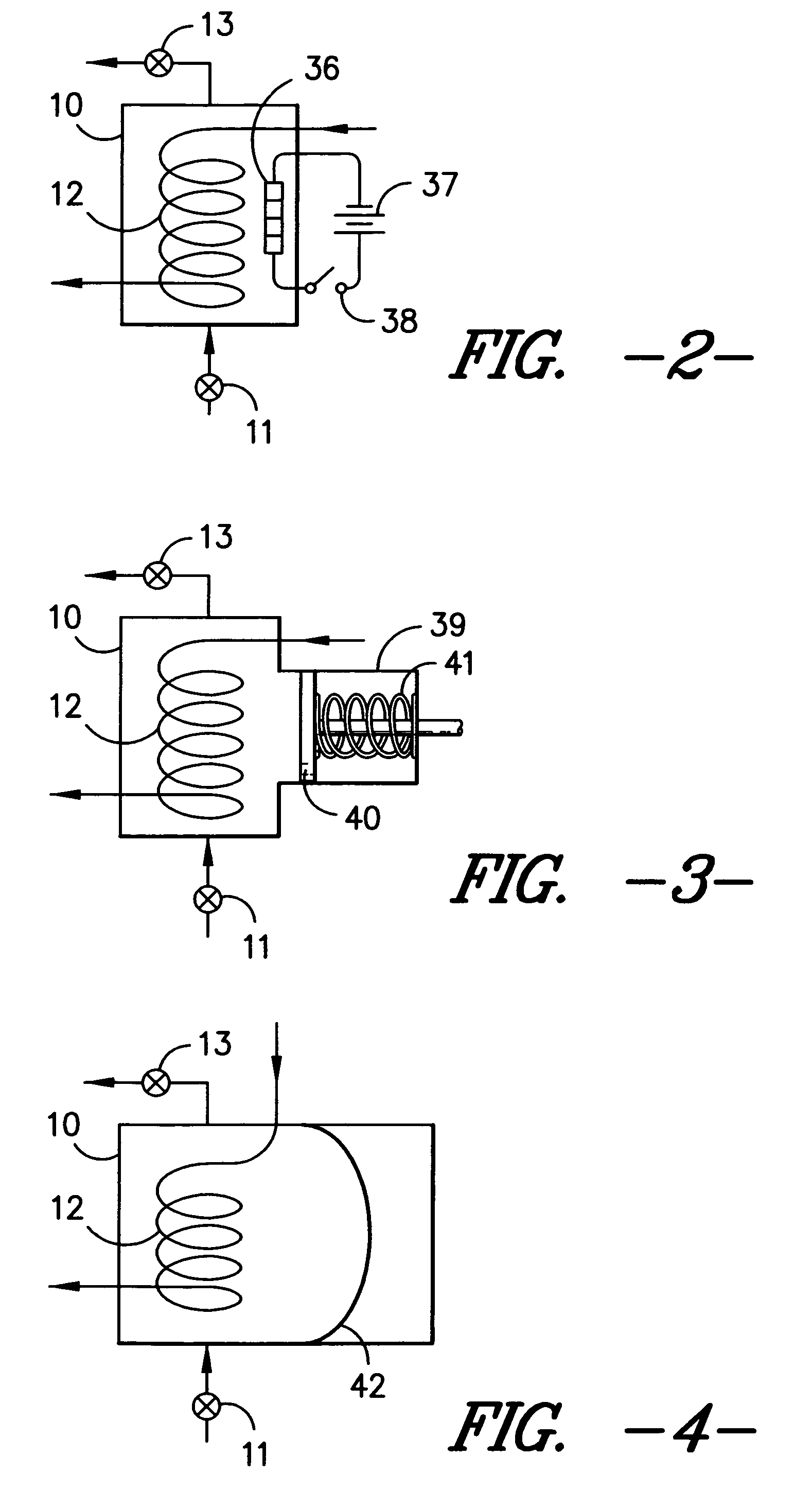External combustion engine
a technology of external combustion engine and combustion gas, which is applied in the direction of steam engine plants, machines/engines, mechanical equipment, etc., can solve the problems of engine's characteristic slow start, delay in transferring heat energy from the combustion gas of the fuel, and other drawbacks of the external combustion engine, so as to reduce air pollution, reduce volatility and flammability, and be safer to handle
- Summary
- Abstract
- Description
- Claims
- Application Information
AI Technical Summary
Benefits of technology
Problems solved by technology
Method used
Image
Examples
Embodiment Construction
[0041]Without limiting the scope of the invention, the preferred embodiments and features are hereinafter set forth. All of the United States patents, which are cited in the specification, are hereby incorporated by reference.
[0042]Referring to FIG. 1, fuel stream 1 and air stream 2 are fed to burner 3 to produce combustion gas stream 4. Valve 5 controls the flow of the combustion gases, which may be diverted all or partially to boiler 6 or bypass 7. Working fluid (liquid state) is fed by pump 8 to boiler 6, where it is heated by the combustion gases. The combustion gases circulate through the heat exchange equipment in boiler 6, shown as coils 9, before passing on to reservoir 10. Any of the combustion gases passing through bypass 7 pass on to reservoir 10. When the engine is first started-up, bypass valve 5 opens to divert a substantial portion of the combustion gases directly to reservoir 10, thereby rapidly heating the working fluid contained therein. In an alternative embodimen...
PUM
 Login to View More
Login to View More Abstract
Description
Claims
Application Information
 Login to View More
Login to View More - R&D
- Intellectual Property
- Life Sciences
- Materials
- Tech Scout
- Unparalleled Data Quality
- Higher Quality Content
- 60% Fewer Hallucinations
Browse by: Latest US Patents, China's latest patents, Technical Efficacy Thesaurus, Application Domain, Technology Topic, Popular Technical Reports.
© 2025 PatSnap. All rights reserved.Legal|Privacy policy|Modern Slavery Act Transparency Statement|Sitemap|About US| Contact US: help@patsnap.com



